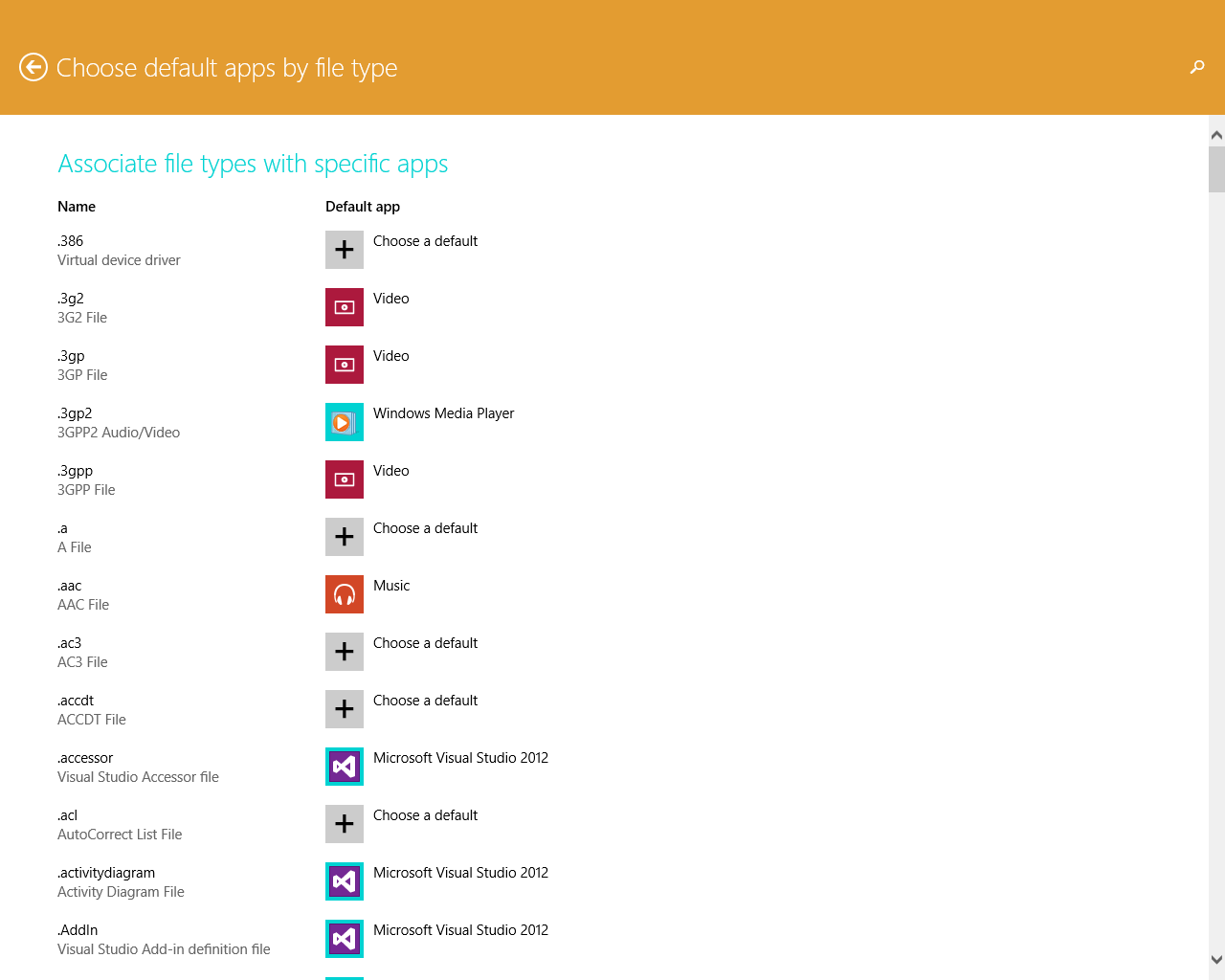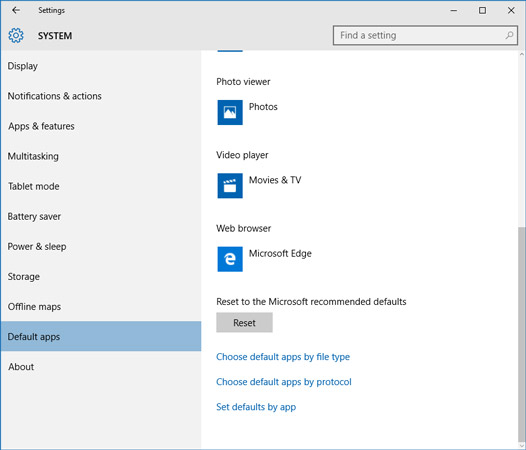

- #SET APPLICATION FOR FILE TYPE WINDOWS HOW TO#
- #SET APPLICATION FOR FILE TYPE WINDOWS INSTALL#
- #SET APPLICATION FOR FILE TYPE WINDOWS ARCHIVE#
- #SET APPLICATION FOR FILE TYPE WINDOWS WINDOWS 10#
- #SET APPLICATION FOR FILE TYPE WINDOWS WINDOWS#
If you want to make things easy, all you’ll need to do is click “Set this program as default”, after which Windows will automatically set that program as the go-to for any protocols, links, or files it’s designed to open on its own. RELATED: Beginner Geek: 7 Ways You Can Change Default Applications and File Associations in Windows Here you’ll find a familiar face with the list of programs available on your machine pinned to the left, and the list of various commands that will open them individually buried under the “Choose defaults for this program” button. “Set defaults by app” is the last, but also most extensive method of managing which files are handled by the apps installed on your computer. Last, But Not Leastįinally, if all these new app settings are a little too jarring for you and you’d rather manage your default apps the old fashioned way, Microsoft has been kind enough to still include the original Windows 7/8 configuration interface for anyone who prefers to keep it old school.
#SET APPLICATION FOR FILE TYPE WINDOWS ARCHIVE#
zip files being extracted via the stock archive reader instead of third-party software like WinRar or 7Zip. Examples of protocol configurations include actions like a specific keyboard command launching into the Windows Search feature, links that contain content from MSN channeling into Windows apps, or. In general, the types of options included here are commands that you would want routed to Windows applications anyway, unless you have a specific need for URL links to launch in separate programs.

In this section, you’ll find a greater level of control over exactly how your computer handles specific requests from global programs and networked devices like Xboxes, remote desktops, and external email clients. Manage Launch Options by Protocolīack in the Default Apps section, you’ll find a second section directly underneath the first option, labeled “Choose default apps by protocol”.
#SET APPLICATION FOR FILE TYPE WINDOWS HOW TO#
RELATED: How to Choose Your Default Applications on an iPhone or iPadĪnd that’s it! In theory you could customize all the possible app combinations from this section alone, but in case you prefer a different system of app management, Microsoft has included two other pathways to keeping your default launch instructions in check. To change this, just scroll down to “.mkv” on the left, and once selected, choose the corresponding application on the right that you’d like to set as the default. mkv files in Windows Media Player rather than the in-house Movies app.
#SET APPLICATION FOR FILE TYPE WINDOWS WINDOWS 10#
Here you’ll be greeted by a two-tiered menu, the first containing every file type that Windows 10 is designed to handle, and the second with the list of apps you currently have installed on the machine. To choose which apps launch which types of media or link by the type of file, select the “Choose Default Apps by File Type” option. Overall, how you choose to organize your app commands is a matter of personal preference, but certain options such as “Default Apps by File Type” can usually tend to be a bit easier to manage for the average everyday user.
#SET APPLICATION FOR FILE TYPE WINDOWS INSTALL#
Though these are the original options you’ll find on a fresh install of Default Apps, you can always use the following options to customize exactly how Windows 10 will handle different requests based on the file type, the program, or an underlying launch protocol. On the details screen for the app that you chose, scroll down and select the file type that you’d like to associate with a different program.The only command left up to you by default is Calendar links, which can be tied to your email provider or a third-party scheduling application that’s been installed at a later date. Locate the app that you’d like to change defaults for (or search for it in the text box), and then click it. On the Default Apps screen, you’ll see a list of installed apps. You can also change file associations by app. You can change it back at any time in Settings > Apps > Default Apps. In the list of apps below, select the app that you’d like to use, and then click OK.įrom now on, the file type that you just modified will open with the app that you selected. To change the association, click the app box that appears.Ī pop-up will ask “How do you want to open files from now on?”, with being the type of file extension that you’re working on, such as. If you typed a known file type, you’ll see the app that the file extension is currently associated with just below the text entry box.

(If that’s the case, click it, and you’ll follow instructions similar to those listed below.) If you typed an extension that isn’t registered, you’ll see a button labeled “Choose a Default” that will allow you to set the default app for it.


 0 kommentar(er)
0 kommentar(er)
